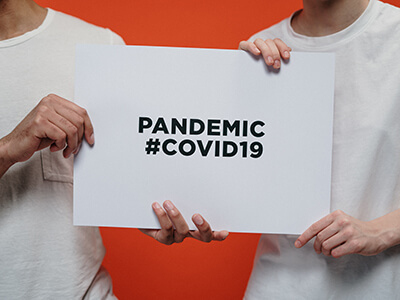Coronvirus (Covid-19) has had a significant impact on the way businesses and organisations are operating. Companies could be trying to diversify, going into a state of hibernation until the crisis passes or be busier than ever in response to a demand for key services.
Either way, marketing in this climate is more important than ever. It can help organisations capitalise on increased demand, connect with new markets or maintain vital brand awareness whilst they weather the storm.
And the demand for video is booming. We’re turning to Zoom for our business meetings and we’re watching YouTube and Instagram videos to home-school our kids, keep fit and brush up on our professional skills. Many more organisations will be embracing video over the coming weeks and months. But with face-to-face video production on hold, what sort of content can we create during the pandemic? Here are three types of video that be created during these uncertain times:
1. User Generated Content (mobile phone and Zoom videos)
Footage filmed by users at home on mobile phones and laptops is also known as User Generated Content. It’s a medium that has been growing steadily on social media with the rise of influencer marketing. But the arrival of lockdown has seen an explosion of this type of content. Many household names are embracing user generated content, even in their television marketing campaigns. User generated content feels authentic and trustworthy. It’s one of the most budget friendly forms of video content right now. Plus there’s something fascinating about seeing into people’s living rooms and, for example, taking a glimpse of someone’s cat wander through the frame!
Staff message videos
Barclays, who have had to close many of their branches, have been embracing user generated content in video marketing campaigns during the Covid-19 crisis. This video features staff members promoting their online services:
What key message could your team promote? If your business is furloughed right now, your message could even be something like ‘How we’re helping in the community during the Coronavirus pandemic’. These types of positive messages will help keep your brand relevant.
Client testimonial videos
Testimonial videos have also been a popular form of video marketing as they are as close as you can get to the holy grail form of marketing – word of mouth. The coronavirus pandemic has seen the rise of ‘stay at home’ testimonial videos. Like this one from Microsoft which features customers explaining how the Microsoft Teams app is helping them run their organisations during the lockdown:
https://www.youtube.com/watch?v=jWroPoNXV08
Celebrity and expert Zoom videos
The pandemic has seen a rise in brands using celebrities to endorse their products. BT ran a series of videos in partnership with ITV featuring celebrities giving ‘stay at home’ lockdown tips. They included ‘How to Download WhatsApp, with Claire Balding’, How to Download a Podcast, with Rylan Clark’ and this mental health tips video featuring Fearne Cotton:
If your organisation doesn’t have the budget for a celebrity endorsement, think about using an expert instead. For example, Enterprise Nation, who support small businesses, recently published a video featuring an expert giving advice on how small businesses can generate cash flow during the coronavirus pandemic.
No video footage available – create a film using photos!
If you’re struggling to get access to video footage, you can even create videos using photos and music. John Lewis made a video featuring photos of their staff who were redeployed to help fight the Covid-19 pandemic.
2. Animation
Animation is another great format that can be produced digitally. If you’re never done an animation project, now is the perfect time to get creative with your first animated film. Animation is particularly useful for explaining key concepts. The charity Crisis recent produced a video to explain how they help tackle homelessness in the UK:
Find out more about our animation services here.
Sainsburys are also currently using animated explainer videos to raise awareness of their new social distancing shopping guidelines:
3. Stock Footage
The third way creating content without face to face production is to use stock footage or re-purpose existing footage that you already have. There are many online footage libraries such as Artgrid and Vimeo Stock allowing unlimited royalty-free footage use, for a monthly fee. You can also think about repurposing some of your previous content by cutting together montages of clips. Try adding text to create something new and unique. This video uses archive and text to promote leadership training organisation Lee Hecht Harrision:
About Bounce Video
Bounce Video is run by award-winning former BBC Producer, Grace Gibbons. We specialise in helping businesses, charities and public sector organisations create compelling video campaigns. You can find out more information about our video production packages here.
